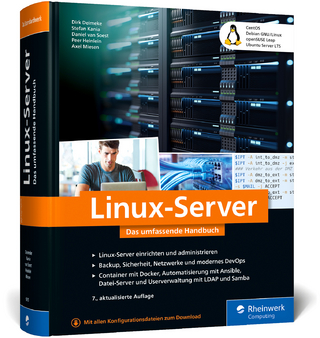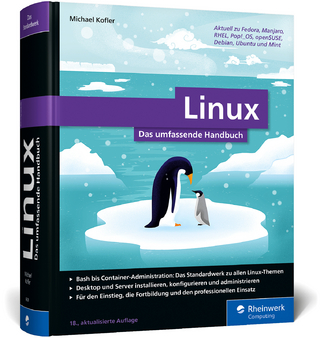
The Cathedral and the Bazaar
O'Reilly Media (Verlag)
978-1-56592-724-7 (ISBN)
- Titel erscheint in neuer Auflage
- Artikel merken
The Linux kernel started with a series of odd statistics. The leading challenger to Microsoft's stranglehold on the computer industry is an operating system called Linux, the product of thousands of volunteer programmers who collaborate over the Internet. The software behind a majority of all the world's web sites doesn't come from a big company either, but from a loosely coordinated group of volunteer programmers called the Apache Group. The Internet itself, and much of its core software, was developed through a process of networked collaboration. The key to these stunning successes is a movement that has come to be called open source, because it depends on the ability of programmers to freely share their program source code so that others can improve it. In 1997, Eric S. Raymond outlined the core principles of this movement in a manifesto called "The Cathedral and the Bazaar," which was published and freely redistributed over the Internet. Mr. Raymond's thinking electrified the computer industry.
He argues that the development of the Linux operating system by a loose confederation of thousands of programmers--without central project management or control - turns on its head everything we thought we knew about software project management. Internet-enabled collaboration and free information sharing, not monopolistic control, is the key to innovation and product quality. This idea was interesting to more than programmers and software project leaders. It suggested a whole new way of doing business, and the possibility of unprecedented shifts in the power structures of the computer industry. The rush to capitalize on the idea of open source started with Netscape's decision to release its flagship Netscape Navigator product under open source licensing terms in early 1998. Before long, Fortune 500 companies like Intel, IBM, and Oracle were joining the party. By August 1999, when the leading Linux distributor, Red Hat Software, made its hugely successful public stock offering, it had become clear that open source was "the next big thing" in the computer industry.
This revolutionary book starts out with "A Brief History of Hackerdom" - the historical roots of the open-source movement - and details the events that led to the recognition of the power of open source. It contains the full text of "The Cathedral and the Bazaar," updated and expanded for this book, plus Mr. Raymond's other key essays on the social and economic dynamics of open source software development. Open source is the competitive advantage in the Internet Age. "The Cathedral & the Bazaar" should be of interest to anyone who cares about the computer industry or the dynamics of the information economy. Already, billions of dollars have been made and lost based on the ideas in this book. Its conclusions will be studied, debated, and implemented for years to come.
Eric S. Raymond is an observer-participant anthropologist in the Internet hacker culture. His research has helped explain the decentralized open-source model of software development that has proven so effective in the evolution of the Internet. His own software projects include one of the Internet's most widely used email transport programs. Mr. Raymond is also a science fiction fan, a musician, an activist for the First and Second Amendments, and a martial artist with a Black Belt in Tae Kwon Do. His home page is at http://www.tuxedo.org/~esr.
Why You Should Care; A Brief History of Hackerdom; The Cathedral and the Bazaar; Homesteading the Noosphere; The Magic Cauldron; The Revenge of the Hackers; Author's Afterword. Beyond Software?; Appendix. How To Become a Hacker; Appendix to The Magic Cauldron.
| Erscheint lt. Verlag | 9.11.1999 |
|---|---|
| Vorwort | Bob Young |
| Verlagsort | Sebastopol |
| Sprache | englisch |
| Maße | 148 x 223 mm |
| Gewicht | 530 g |
| Einbandart | kartoniert |
| Themenwelt | Informatik ► Betriebssysteme / Server ► Unix / Linux |
| ISBN-10 | 1-56592-724-9 / 1565927249 |
| ISBN-13 | 978-1-56592-724-7 / 9781565927247 |
| Zustand | Neuware |
| Haben Sie eine Frage zum Produkt? |
aus dem Bereich



